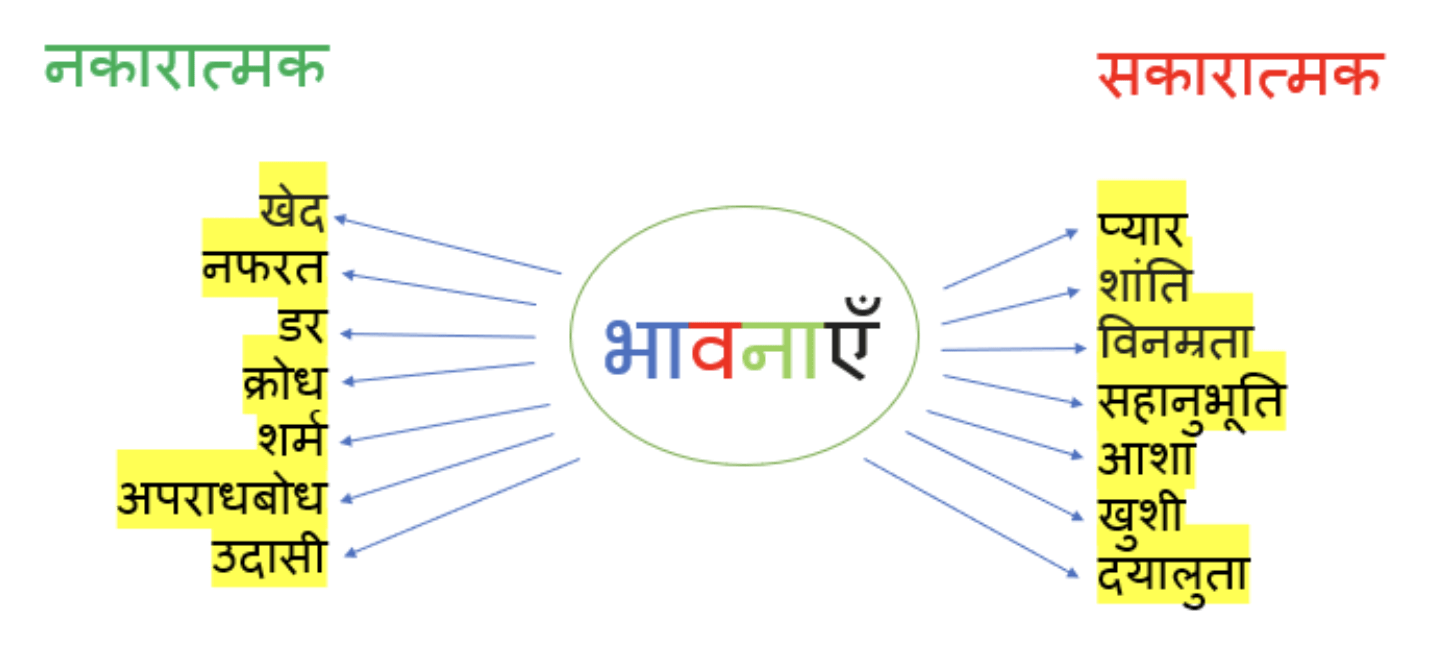Proficiency: Intermediate Mid/High; Time: 4X75 min.
Objectives: Students will be able to:
- express and describe feelings, mental states and moods
- describe and explain the effects of positive vs. negative emotions on the mental health
- relate conditions and activities to positivity and mental wellness
- provide solutions for emotional mental wellness.
Language Targets: Students use:
- formation of adjectives from nouns (part 1 and part 2)
- detailed vocabulary related to emotions and mental health
- expressions with feelings (X को + noun)
- relative correlative sentences (review) जब… तब…, जैसे… वैसे…, जहां… वहाँ…, जो… वह…
- passive and passive subjunctive.
Performance Task: 1. In the role of student advisors, learners create a brochure for positive living to be distributed on campus. 2. Students develop video advisory piece for a wellness Youtube channel. 3. Students participate in debates -“Physical exercise and less screen time are more important for overall wellness than mental relaxation techniques.”
Step 1. Teacher share screen with the following flyer and asks students: इस विचार से आप राज़ी हैं या नहीं? क्यों?
Step 2. To check what students know: Competition: In two big teams students are given 10 min to list as many as possible words for emotions under each face: चहरे का भाव बताइये (ऊपर से शुरू करना, बाई से दाई तरफ़). The class comes together and while listing their suggestions — teacher reminds them to classify them as. Teacher takes notes on the white board — writes in a table with 3 columns (१) नकारात्मक, (२) सकारात्मक (३) बीच के

Step 3. Students compare what they know with the diagram above. Then, they individually, examine the list of adjectives below, mark the new words and put the neutral ones in the blank column:
Positive Feelings and States
| English | Hindi | |
| blissful | आनंदमय | |
| brave | बहादुर | |
| careful | सावधान | |
| cautious | सतर्क | |
| clever | चालाक | |
| confident | आश्वस्त | |
| curious | उत्सुक | |
| ecstatic | उन्मादपूर्ण | |
| excited | उत्तेजित | |
| fair | निष्पक्ष | |
| fantastic | विलक्षण | |
| friendly | मित्रवत | |
| glad | प्रसन्न | |
| good | अच्छा | |
| great | महान | |
| happy | खुश | |
| honest | सत्यवादी | |
| innocent | निर्दोष | |
| interesting | दिलचस्प | |
| joyful | हर्षित | |
| meditative | ध्येय | |
| nice | अच्छा | |
| optimistic | आशावादी | |
| pleasant | सुखद | |
| pleased | सन्तुष्ट | |
| proud | गर्वित | |
| quiet | शांत | |
| satisfied | संतुष्ट | |
| sensible | समझदार | |
| serious | गंभीर | |
| surprised | हैरान | |
| wonderful | अद्भुत |
Negative Feelings and States
| English | Hindi | |
| angry | नाराज | |
| annoyed | नाराज | |
| aggressive | आक्रामक | |
| agonized | कष्टदायी | |
| arrogant | अभिमानी | |
| awful | डरावना | |
| bad | बुरा | |
| bored | ऊबा हुआ | |
| confused | परेशान | |
| crazy | सनकी | |
| disappointed | निराश | |
| disbelieving | अविश्वास | |
| disgusted | निराश | |
| enraged | क्रुद्ध | |
| exhausted | थका | |
| frightened | भयभीत | |
| frustrated | निराश | |
| grieving | दुःखी | |
| guilty | दोषी | |
| helpless | असहाय | |
| horrified | भयातुर | |
| hurt | आहत | |
| hysterical | उन्मत्त | |
| indifferent | उदासीन | |
| idiotic | मूर्खतापूर्ण | |
| jealous | ईर्ष्यालु | |
| lonely | अकेला | |
| lovesick | प्रेमातुर | |
| mad | पागल | |
| mischievous | शरारतपूर्ण | |
| miserable | अभागा | |
| nasty | बुरा | |
| nervous | घबराया हुआ | |
| sad | दुःखी | |
| shocked | हैरान | |
| sheepish | शर्मिंदा | |
| silly | मूर्ख | |
| smug | आत्मसंतुष्ट | |
| strange | अनोखा | |
| suspicious | संदिग्ध | |
| stupid | मूर्ख | |
| terrible | भयानक | |
| upset | परेशान |
Step 4. Teacher explains how the nouns denoting emotions are used +को construction + आना / होना. Students practice the new structures in the context of the topic with जब… तब… sentences.
Step 5. In the role of student advisors, in pairs students create a brochure for positive living to be distributed on campus. It includes:
- 3+ most positive emotions and explain when and
- why a person can and should experience them as a path to wellness.
- use the new language structures (5+ sentences)
- 5+ sentences जब… तब…
- 10+ new words.

